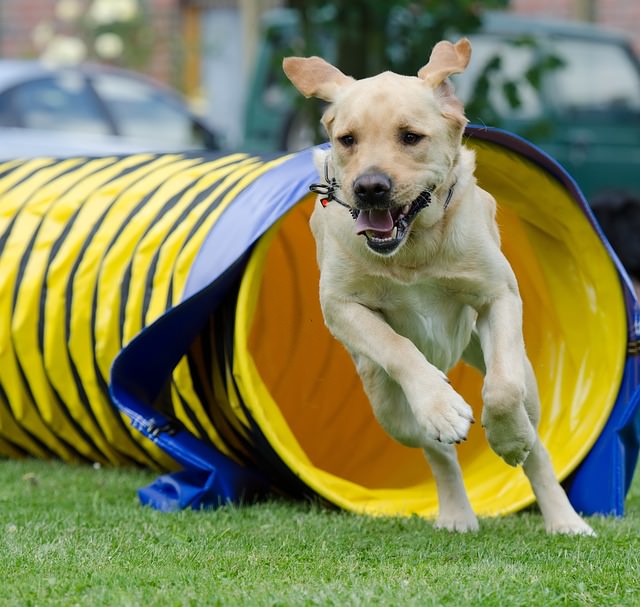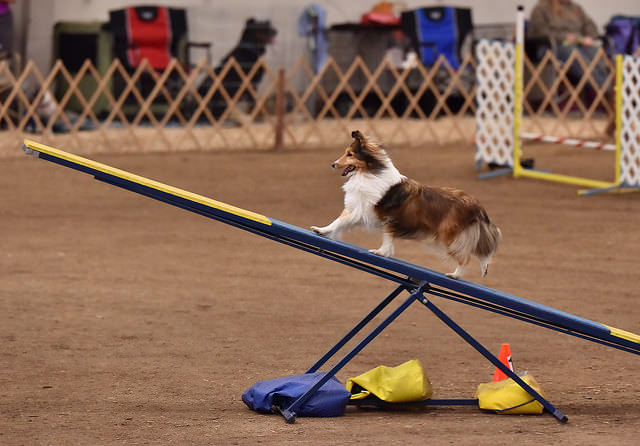Agility is a very exciting sport open to all dogs, regardless of breed. Almost all dogs love agility and it doesn’t matter if you’re looking to be the next national champion or just want to enjoy some classes with your dog. Just like taking basic obedience classes with your new dog or puppy, agility is a great, fun way to strengthen the bond you have with your canine companion. It’s also a great way to build confidence in an insecure dog and offer exciting mental and physical exercise. Agility classes can be fairly easy to find, but there are a few things you and your dog should have checked off on your list before you sign up.
#1 – Active & Energetic
Agility is best suited for dogs that enjoy physical activity. Although any breed can train and compete in the sport, the more active dogs typically have more fun. This is only because they enjoy tackling the obstacles at a run much more than your couch-potato breeds. If you have a very active dog that you think would benefit from some special exercise, agility might be the perfect sport for you to try.

#2 – Basic Obedience Covered
Agility does require some basic obedience, such as a sit-stay and down-stay, and most instructors are going to expect that you have at least a little bit of training. You don’t have to be ready for an obedience competition, but a basic understanding by both you and your dog of house manners and other commands is a good idea. This also ensures that your dog is not going to run amok once the leash comes off at agility class, disturbing others and wasting training time that everyone is paying for.
#3 – Properly Socialized
Your dog doesn’t have to be a social butterfly, but they should not be overly excited by other dogs in their presence. You want your dog to be comfortable and neutral to seeing other dogs in crates next to them or running an agility course. You don’t want your dog to be aggressive towards other dogs, but not so friendly that they become distracted from training either. After all, part of agility competition is ignoring other dogs in the environment to run the obstacle course. If your dog struggles being around other dogs or has issues with aggression, you might be still able to contact instructors about private classes. Sometimes taking private classes will help your dog focus more on the training and will allow you to move to a group class later.

#4 – Great Physical Health
Most organizations require that your dog is at least one-year-old to compete in agility, although training can start at a younger age. This is because agility is a very physically demanding sport – lots of pressure on your dogs muscles, bones and joints. You don’t want to expose a growing dog with open growth plates to repetitive pounding seen in agility, so you’ll have to tailor your training to be safe for your dog. Further, overweight dogs are more likely to be seriously injured while training in agility, so you want to make sure your dog is at a healthy weight too. You might notice your pup loses some pounds after you start training because of the increased exercise and this is just fine as long as your dog’s weight is healthy. Make sure feet and nails are healthy, there is no limping or lameness and that your dog can comfortably run an agility course. The healthier your dog is before running agility, the less likely he or she is to become injured.
#5 – Beginning Boredom Behaviors
If your dog is showing problematic behaviors, such as chewing, digging, or excessive barking, it might be because he or she is bored. More often than not, nuisance behaviors like these are caused by a lack of adequate physical and/or mental stimulation. You may be providing some training and exercise for your dog, but there’s a chance it could not be enough. Some dogs do very well with just one walk a day and basic obedience, others need time to run, complex tasks to learn and a “job” to do and enjoy. If your dog’s behavior is becoming problematic, you might want to consider taking an agility class for a fun, healthy way to exercise your pup’s body and mind.
